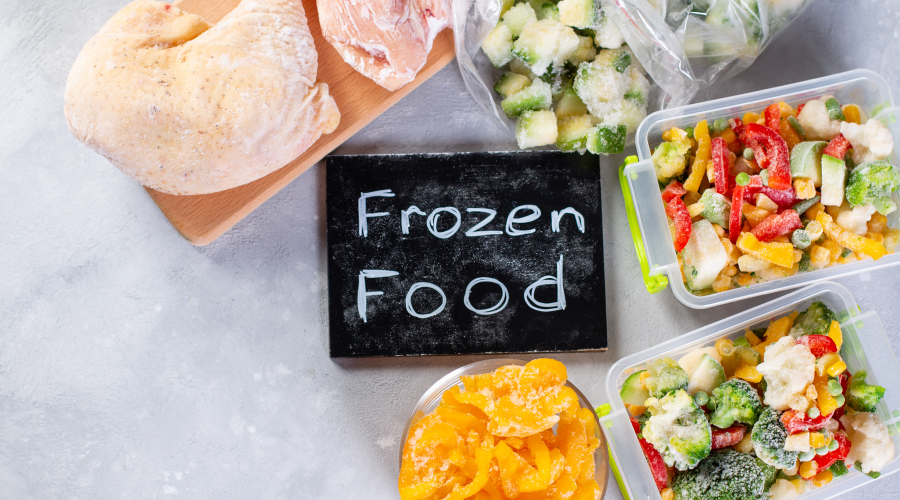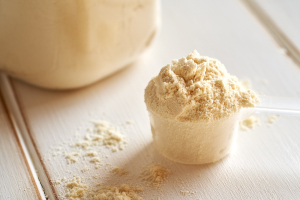

Food price inflation is increasing the cost of fresh foods, and the frozen food market is projected to reach $638.6 billion in 2034. We have been socially conditioned to believe that “fresh” somehow automatically means “better.” But the truth is considerably more complex. In this blog, we get into the long debate about frozen foods vs fresh foods. We will discuss some pros and cons, look at their nutritional value, and help you make smart decisions regarding your kitchen.
What are Frozen Foods?
Frozen food is any food processed to bring down the temperature to preserve it. Freezing depresses decomposition and inhibits the growth of bacteria. Thus, it makes the food usable for several months or even years. Usually, fruits and vegetables destined for freezing are picked at peak ripeness, washed, cut, frozen, and packaged within hours. Freezing is a natural way of preserving food, but some prepackaged foods have added sugars or preservatives to extend their shelf life.
Disadvantages of Frozen Food
Frozen treats are convenient and delicious, but there may be side effects of eating frozen food if you over consume them. If you think about getting occasional frozen foods that are not in season, that is quite okay. But if you do this regularly, that is not a good idea. Often, these foods possess little nutrition and have potential health dangers. Some of the disadvantages of frozen foods are listed below:
- Freshness is preserved in the starch of such foods, but it is eventually converted into sugar during digestion, increasing the risk of diabetes.
- They may also contain a lot of trans fats, which increase bad cholesterol and decrease good cholesterol, thereby causing heart problems. High sodium levels also add to this risk.
- Frozen foods are high in the contents of fats, doubling the fat-to-carb ratio and promoting excessive calorie intake.
- A longer freezing process reduces vital vitamins and minerals in frozen vegetables, making them less healthy when compared with fresh foods.
- Frozen fruits lack the crunch and flavour of fresh produce.
- Scientists believe preservatives in such foods can lead to cancer.
- High sodium in frozen foods can lead to high blood pressure, hence predisposing an individual to stroke and heart-related diseases.
These canned foods will stay longer than fresh produce but have their limits. Frozen veggies will last up to 3-4 months, fruits up to 4-5 months, and meat up to 4-6 months. During cooking, follow the instructions on the package. Cover the food for it to retain its moisture, and stir it around to avoid cold spots for even heating.
What Counts as Fresh Foods?
Definitions of fresh food vary. Anything not needing constant refrigeration is fresh to some; to others, it needs to be right from the source. Generally speaking, fresh foods are fruits, vegetables, or meats that are not heavily processed and have not been preserved by salting, drying, or freezing.
Recently harvested fruits and vegetables and recently butchered meat are as fresh as you can get. Most produce is picked before it has ripened and will remain fresh during transport while continuing to develop a nutrient profile. Once in stores, most fresh items stay on display for about three days.
Some of the fresh food benefits are:
- Fruits and vegetables are rich in vitamins A, C, and K, folate, and potassium.
- Natural enzymes and dietary fibre in fresh foods improve digestion and give one a healthy gut.
- Fresh foods packed with antioxidants decrease inflammation and lower the risk of many chronic diseases, such as heart disease and cancer.
- They help manage weight, blood pressure, and cholesterol and promote better eye health.
- Fresh foods often require less packaging, reducing waste and supporting a healthier planet.
- Buying locally at farmer’s markets supports local agriculture and minimises your carbon footprint by reducing reliance on long-distance transportation.
- Fresh vegetables give that snap and crunch feel, and fruits are far juicier compared to frozen foods.
Fresh Foods Vs Frozen Foods
Following is a comparison between fresh foods and frozen foods:
| Aspect | Fresh Foods | Frozen Foods |
| Nutritional Value | Typically higher, especially right after harvest | Can be lower due to nutrient loss during freezing |
| Shelf Life | Short, usually lasts a few days | Longer, can last several months to years |
| Taste & Texture | Fresher taste, better texture, crispness | May have altered taste, softer texture |
| Convenience | Requires frequent shopping, limited storage | Convenient, easy to store, quick to prepare |
| Preparation | Often requires more prep time, especially for raw produce | Pre-washed, pre-cut, often requires less prep time |
| Seasonality | Seasonal availability can limit options | Available year-round regardless of season |
| Additives/Preservatives | Usually free from preservatives | May contain preservatives, added sugars, or sodium |
| Health Risks | Lower risk, fewer additives | Potential risks from high sodium, trans fats, and preservatives |
| Environmental Impact | Generally lower carbon footprint | Higher energy use for freezing and storage |
| Cost | Can be higher, especially for out-of-season items | Often more affordable, especially when buying in bulk |
Conclusion
Though frozen fruit and frozen vegetables are convenient, they retain most of their nutrition when stored at home for several days. However, there is something special about fresh produce. Fresh colours, rich textures, and the explosion of fresh food flavours bring your meal to a whole new level. From a gourmet home cook to a busy person needing easy and quick meals, integrating fresh and frozen foods into your diet can bring a holistic and enjoyable eating experience.




